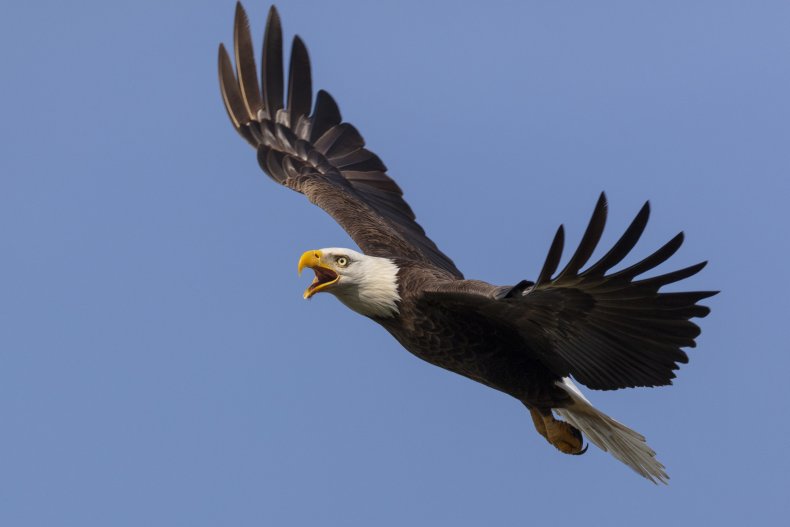Bald Eagles Kill Dozens of Lambs on Idaho Farm
Bald eagles have killed more than 50 lambs at a farm in southern Idaho, the owner has revealed.
Rocky Matthews told Idaho newspaper The Times-News that he had started finding dead lambs on his farm near Murtaugh Lake in April this year.
The animals all had small puncture wounds, leading Matthews to conclude that someone was killing them with a pellet gun.
One day, however, the farmer saw a bald eagle attack his flock and realized what was really happening.
He said bald eagles had lived in a large nest on his property for more than 20 years and had never attacked the flock before. At present, there are two adults and at least two baby eagles in the nest.
"They've never crossed paths till this year," Matthews told The Times-News. "The damage under the [lamb's] hide is a hundredfold from what you see on the exterior."
In total, 54 lambs have been killed so far by the bald eagles, costing the farmer about $7,500 in lost revenue.
Seven of the lambs were killed in a single day, Matthews said. "I truly think he was just honing his skills because you don't kill seven of them out of need," he said.
Lyn Snoddy, a wildlife biologist from the Idaho Department of Fish and Game, told the newspaper that bald eagles strike from above, using their talons to grab their prey. These sharp talons can slice open internal arteries, causing prey to bleed to death.
The birds' main source of food is fish, but they also prey on smaller mammals.
Matthews said there were fewer carp in Murtaugh Lake this spring—a result of the water taking longer to warm up—which may have forced the eagles to look elsewhere for food.
Bald eagles, the national bird of the U.S., are protected by multiple federal laws. Killing one can lead to a maximum fine of $100,000 and one year in prison for a first offense.
Matthews said he had been in contact with Idaho Wildlife Services, part of the U.S. Department of Agriculture, to resolve the problem. An official from the agency visited the farm and performed a necropsy on the dead lambs.
Matthews was given two options to protect his flock. The first was applying for a Federal Migratory Bird Depredation Permit from the U.S. Fish and Wildlife Service, which enables individuals to take certain measures to prevent birds from damaging crops, livestock and private property.
The second option, which the farmer chose, was to move the livestock closer to the barn.
Bald eagles' range spans from Alaska and Canada right down to Florida and northern Mexico. The adults tend to measure around 3 feet in length, with a 7-foot wingspan.
They build larger nests than any other bird in North America—even holding the record for the biggest bird's nest recorded, according to Guinness World Records.
The nest was discovered near St. Petersburg, Florida, in 1963. It measured 9 feet, 6 inches wide and 20 feet deep. Officials estimated that it weighed more than 4,400 pounds.


